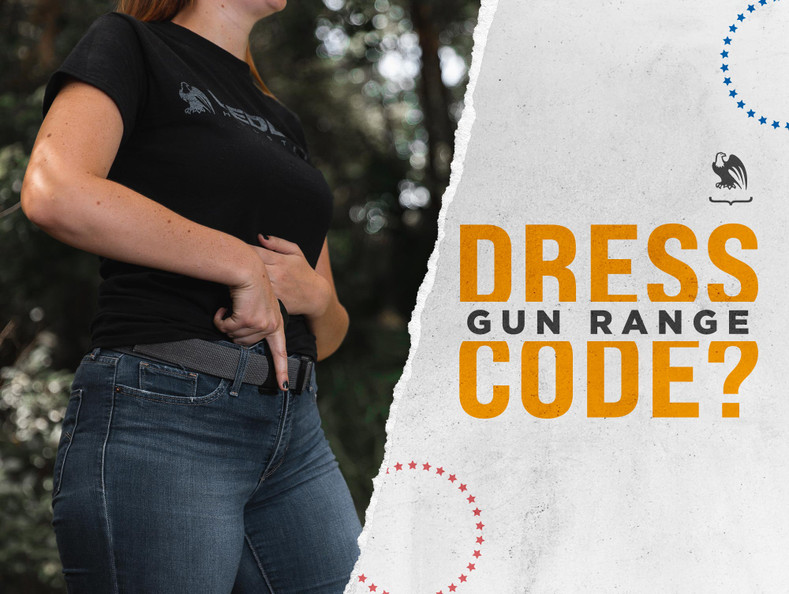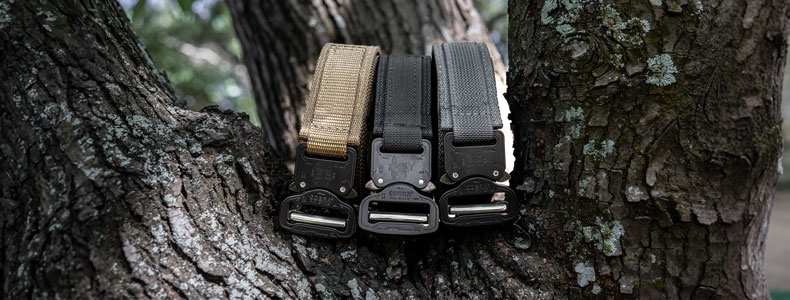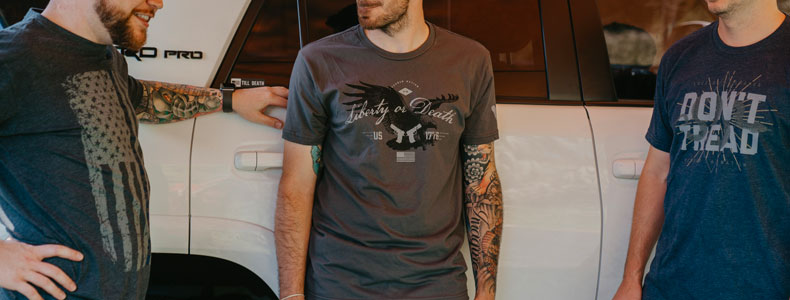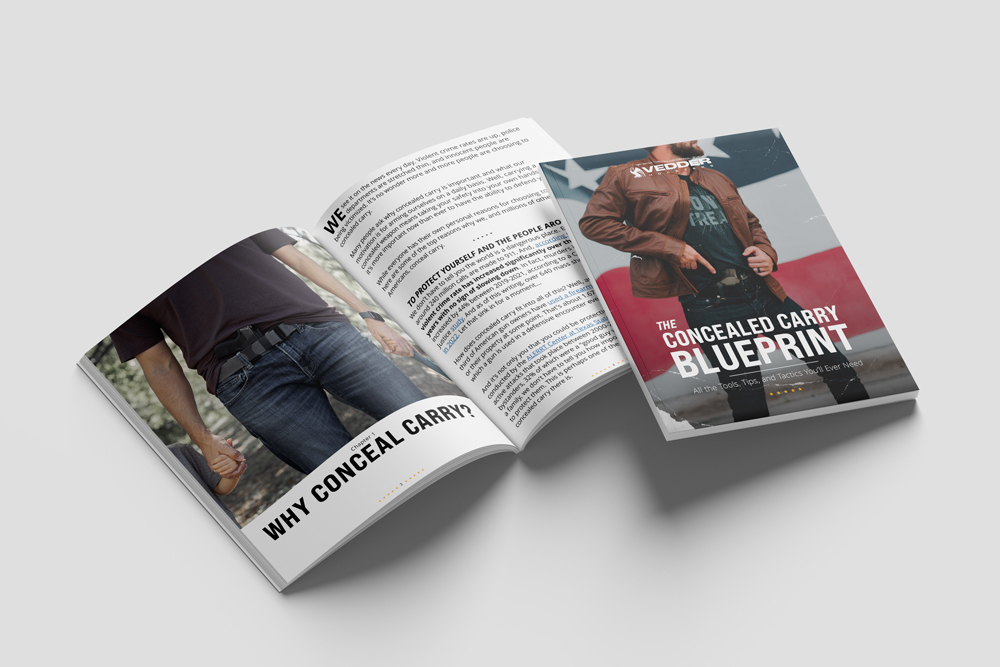What to Wear to a Gun Range

If you’re reading this, you’ve probably never been to a gun range before, or at least it has been a while.
Either way, planning out what to wear to the shooting range is an important part of the overall experience. While this article is going to be far from fashion advice, I wanted to offer some tips and suggestions that I have picked up shooting at ranges over the years.
You don’t have to buy tactical shooting clothes to enjoy the range. When deciding what to wear to a gun range, the most important things to consider are safety, the comfort and range of motion of your clothes, and the type of weather you’ll encounter if you’ll be outside.
In this article, I’ll walk through my thought process – top to bottom – in getting ready to go to both indoor and outdoor ranges. I’ll also recommend some accessories I’ve found to be essential in making your range experience go smoothly and safely.
Choosing shooting range clothing can be a bit of a process, so I’ll walk you through mine here. Let’s get started!
Products Mentioned In This Article
What to Wear to the Range

As an avid shooter of over two decades, I’ve spent my share of time at the range.
Much of my experience has been in outdoor climates ranging from Michigan winters to Florida summers. At both indoor and outdoor ranges, I’ve put enough rounds down range, and observed others doing the same, to have developed a fairly good idea of the dos and don’ts of shooting range clothing. So, without further ado, here are my rangewear recommendations:
Shoes
At indoor ranges, make sure to wear shoes that you’re generally comfortable standing in for long periods and that you don’t mind getting dirty: spent shell casings can certainly hit your feet and usually have some carbon on them.
Above all, wear close-toed shoes: I once saw a tourist at a range in Miami get a very hot 9mm case stuck between her toes because she was wearing sandals, and it looked more than a little unpleasant. Needless to say, sandals are now number one on my list of what not to wear at a shooting range.
At outdoor ranges, things are a little more dependent on weather and terrain. If the range is one where you have to walk through a field to reset targets, you might well want to consider some hiking or work boots to keep from either rolling your ankle or being bitten by any of the local wildlife.
Up in Washington where I currently reside, many of the outdoor ranges are hilly, so my go-to is some well-worn boots that are also waterproof, as wet feet are always pretty miserable on a range day.
Pants
While you can certainly get away with wearing shorts to an indoor range, I generally do not recommend it, for the same reason that wearing close-toed shoes is a good idea. Catching hot brass on the skin is unpleasant. It’s also usually pretty cold in indoor ranges due to their ventilation systems.
For outdoor ranges, again, the weather is the big thing to consider here. For cooler weather, jeans are a smart choice. In hotter weather, I still recommend pants to keep the sun and bugs at bay, and many companies make great light pants: look for hiking and outdoor brands, as they often charge a lot less for good quality than specific “tactical” pants that you will not see much benefit from at the local shooting range.
Whether indoors or outdoors, I prefer cargo pants for their extra pockets. I typically keep gloves and spare earplugs in my pockets, as well as a multitool for quick fixes on any malfunctions. Also, if it’s going to be a long session, those pockets are the go-to spot to stash a granola bar somewhere I know it won’t melt or end up “lost.”
Shirt
When it comes to shirt choices for indoor ranges, I almost always wear an old T-shirt. I learned the hard way that wearing something with an open collar, like a polo shirt, is a very poor idea when I caught a hot piece of .380 brass down the front of my shirt, which burned a little mark on my stomach that is still there today.
Instead, go with an old shirt that you won’t mind getting a little carbon or gun oil on. To keep things eco-friendly and frugal, use those same, preferably cotton, shirts to clean your firearms once they’re too worn or stained to wear in public anymore.
Outdoors, I have taken to wearing long-sleeve performance tees. They not only catch brass but have the awesome benefit of preventing sunburn as well. When it comes to shirts, go for function over form when deciding what to wear to a gun range.
Also, while you’re here, Vedder sells some cool graphic T-shirts if you’d like to show your support for our products at the range as well!
Cold Weather Gear
To make things safe for the shooters and staff, indoor ranges have impressive and effective ventilation systems. This means that they’re usually pretty chilly inside, thus I recommend wearing or bringing a sweater or fleece jacket of some kind with you.
With that said, avoid hoodies: the hood can catch brass that will either make a mess in your washing machine later or, if you are especially unfortunate, become an issue at a TSA checkpoint the next time you fly.
For outdoor shooting, I tend to very much like vests if I’m going to be doing a lot of moving. The key is to balance being warm when you’re sitting still, but not sweating when you’re moving, as the sweat will eventually cool down and make you much, much colder. Also, there’s something cool about old-style (and vintage, if you can find them) shooting vests and jackets that I very much enjoy aesthetically.
Rainy Weather Gear
Generally, rain gear isn’t much of an issue at indoor ranges, and I’d highly recommend going to a different indoor range if yours has a rain problem.
While shooting is merely a hobby to some people, others take going to the range fairly seriously and use it as training to use a firearm in self-defense. Since you don’t get to choose when you might have to defend yourself, training in the rain is an excellent idea.
A hooded rain jacket is a must for training in the rain: look for one where you can draw the hood tightly and make sure to do so to avoid the hot brass issue that has come up several times in this piece already.
Hats
I’m usually not a hat wearer, especially indoors. That’s very different if I’m planning on going to the range to shoot my Sig P238. While I love how compact and reliable it is, the little pocket pistol tends to kick brass directly into my hair or forehead. So, I wear a baseball cap every time I go to the range to keep that from happening, and it’s something that you might want to consider as well.
For outdoor ranges, I doubly recommend the baseball cap: keeping the rain and sun out of your eyes is important for your ability to see targets and to shoot well. For cooler weather, think about a wool watch cap as well: even though they don’t have a brim, the wool will work well in wet weather to keep you warm, which is exactly why militaries still issue them to this day.
Eyewear
You need to wear eye protection with every single shot that you take. Most ranges require this as well, but the goggles they’re willing to lend out are usually scratched up and do not have a fog-resistant coating.
For shooting at indoor ranges, I recommend a trip to your local big-box home repair store. In their safety glass section, you should be able to find a relatively affordable pair of safety glasses that have an antifog coating. I highly recommend spending a few extra dollars on those coatings, as it’s common to fog up glasses at cold indoor ranges.
While it might be tempting to use your normal outdoor sunglasses when shooting outdoors, I don’t recommend this. Instead, look for sunglasses specifically meant for shooting, or that have impact ratings for work, motorcycling, or the like. Many brands make sunglasses that are both stylish and offer government-rated impact protection.
Many eye care health providers also sell prescription glasses that are impact resistant, and if you wear glasses you should consider this if you plan on doing much shooting at all.

Ear Protection
I take ear protection as seriously as I do eye protection – and I had to learn the hard way. After too many years of being in marching bands and doing construction without using adequate ear protection, I have a little tinnitus in my left ear that never does quite go away.
No matter what, always wear ear protection even if there are no enforced rules that make you do it. It is possible to get good quality ear protection for under $20.
I use two forms of ear protection at one time: foam ear plugs and over-the-ear muffs. That way, if my shooting glasses make the seal on the earmuffs less than ideal, I still have adequate protection against one or two shots before I adjust the earmuffs.
Gloves
While gloves aren’t strictly necessary for shooting at an indoor range, I tend to wear some shooting gloves anyway. This is for two reasons: to cut down on some of the lead contamination and to keep heat from the barrels of guns from burning me.
In cold weather, shooting gloves are a must: Mechanix makes gloves that are affordable and do the job exceptionally well. Many folks in military and law enforcement units swear by various models by this company, and I’m more than willing to throw in my endorsement as well, considering that these gloves are relatively cheap, durable, and very easy to take off and on.
Belts
Most of the time when we think about belts in conversation with firearms, it’s about concealed carry. Vedder offers several belts, ranging from some that look distinctly tactical, to belts that would not look at all out of place with a suit.
I highly recommend getting a specifically-designed gun belt since they tend to be much more rigid than normal belts. Whether or not you’re concealed carrying, if you take my above advice and wear cargo pants with some stuff in the pockets, you’re going to want to have a more rigid belt that can take the added weight of some additional gear.
Summary
When thinking about what to wear to a gun range, I follow two general principles. First, wear clothes that will make you feel comfortable. That means thinking about temperature, precipitation, and, of course, personal style and tastes. From there, I focus on safety: wear eye and ear protection with every shot, and try to dress in such a way that there are few points for hot brass to ingress inside of your clothing.
You do not have to buy special shooting clothing to go to the range. While I might very much like the shooting vest I found at a thrift store years ago, ranges tend to be casual, welcoming places as long as you’re dressed in a way that makes you safe and feel comfortable.
If you’re looking for a new IWB, OWB, or pocket carry holster, visit our Holsters by Gun Model page for Kydex holsters that are custom-made for your weapon of choice.
Interested in items beyond holsters? Check out our Resources Page for links to recommended products like lights, lasers, first aid, maintenance, and more, and browse our selection of apparel, and accessories at our website, vedderholsters.com.
To stay up-to-date on all the latest Vedder Holsters content and offerings, check out our blog and follow us on Facebook, Instagram, and Twitter. And be sure to visit our sister company, GeoGrit, for all of your American-made minimalist wallet needs.
*This page contains affiliate links. When you purchase a product included on this list, we receive a commission at no extra cost to you.



